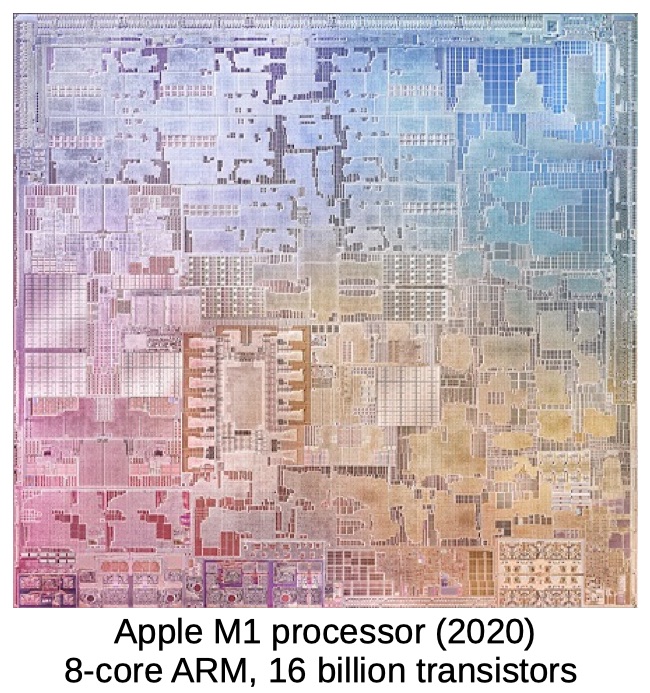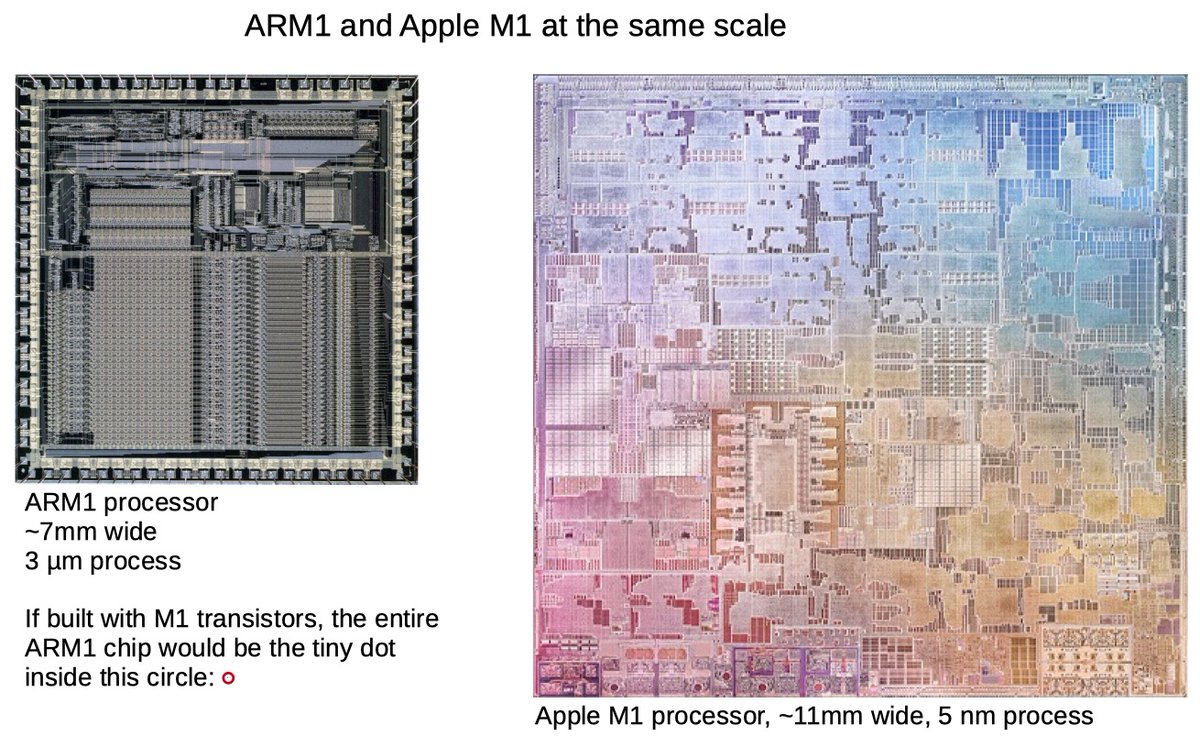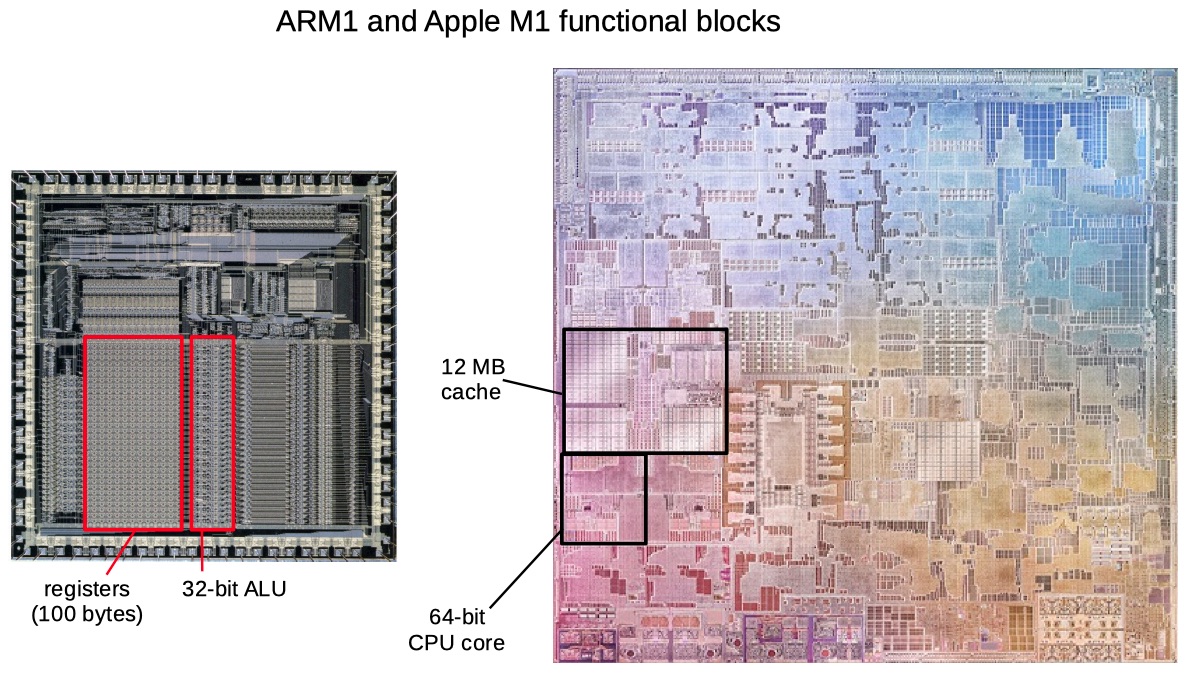With Apple's recent announcement of the ARM-based M1 processor, I figured it would be interesting to compare it to the first ARM processor, created by Acorn Computers in 1985 for the BBC Micro computer. Designers were Sophie Wilson and Steve Furber.
Here are the two dies at the same scale. The M1 is over twice as large physically as the ARM1. It has 16 billion transistors vs 25,000 for the ARM1. If you built the ARM1 using the same technology, it would be a pixel-sized speck.
The ARM1 processor ran at 6 megahertz, while the M1 runs at 3.2 gigahertz, over 500 times faster. While the ARM1 was a single processor, the M1 has 4 high-performance CPU cores, 4 efficiency CPU cores, a 16-core neural engine, and 8-core GPU.
The ARM1 had an 84-pin package, 30mm wide. The M1 package is smaller at ~21mm wide, and has DRAM modules on it. Compare the yellow ceramic disc decoupling capacitors on the ARM1 board with the tiny 0402 capacitors surrounding the M1 die. (Photo shows packages at same scale.)
Looking at the ARM1 die, you see functional blocks such as 100 bytes of registers and a basic 32-bit ALU. On the M1 die, similar-sized functional blocks are a 12-megabyte cache and a complete 64-bit CPU core. It shows what Moore's law has done over 35 years.
Credits: M1 photo © Apple. ARM1 photo © ARM Ltd. ARM package photo CC BY-SA 3.0 Peter Howkins. Some M1 data from AnandTech ( https://www.anandtech.com/show/16226/apple-silicon-m1-a14-deep-dive). I've written more about the ARM1 here: http://www.righto.com/search?q=arm1
The ARM processor started with the Acorn RISC Machine project in 1983. Apple got involved in the late 1980s, using the low-power ARM 610 processor in the ill-fated Newton handheld. In 1990, Acorn, Apple, and VLSI Technology formed Advanced RISC Machines, with Apple owning 43%.
To see the ARM1 in action with its 25,000 transistors blinking away, check out the simulator created by the Visual 6502 team: http://visual6502.org/sim/varm/armgl.html

 Read on Twitter
Read on Twitter






